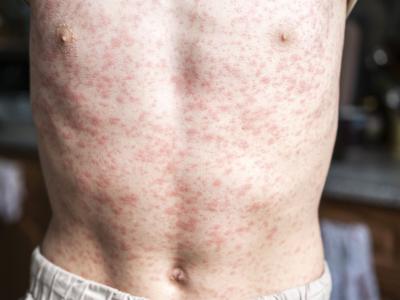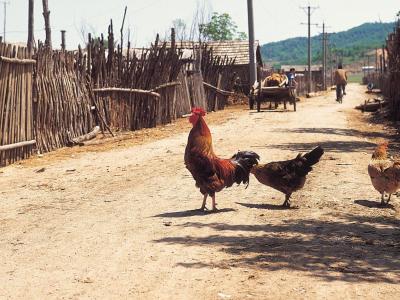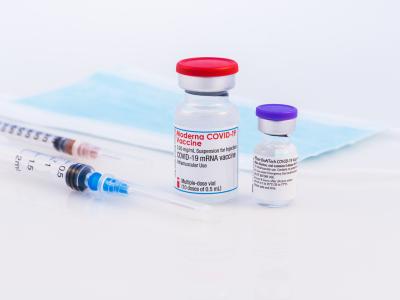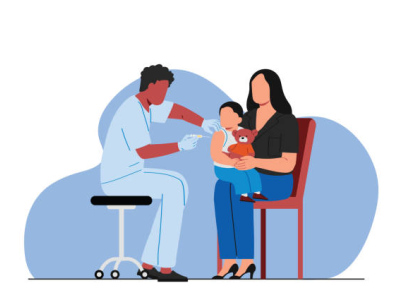Jun 21, 2012 (CIDRAP News) – Though today's publication of the second of two H5N1 transmissibility papers ends a waiting period, it doesn't halt the uncertainty over what the 8 months of controversy means for future dual-use research of concern (DURC) and the status of a voluntary moratorium.
Several experts addressed the topic in scientific journals today, including some in a special H5N1 issue of Science that accompanied the journal's publication of the study by a group at Erasmus Medical Center in the Netherlands led by Ronald Fouchier, PhD. The issue also contains a related mathematical modeling study on the mutations that were the focus of the study.
(See related story, "Fouchier study reveals changes enabling airborne spread of H5N1.")
The first study, by Yoshihiro Kawaoka, PhD, DVM, and colleagues at the University of Wisconsin, was published last month in Nature.
Anthony Fauci, MD, director of the US National Institute of Allergy and Infectious Diseases (NIAID), who coauthored one of Science's DURC commentaries, addressed reporters' questions on the future of DURC and the status of the moratorium yesterday during a press conference hosted by the journal.
NIAID is the National Institutes of Health (NIH) agency that funded the two H5N1 transmission studies. Fauci has been involved in national and international deliberations and has been at the center of US policy debate and decisions on the issue.
He said though the NSABB eventually determined that both studies should be published in full, the issues and challenges of balancing the potential benefits of the research with risks to public health haven't ended.
He said government officials and scientists have learned some critical lessons about the execution and oversight of DURC, which spurred the Mar 29 publication of guidelines for federal agencies to use to address DURC issues.
Fauci said the federal government is developing guidelines to help biosafety committees at research institutions evaluate DURC, which will appear soon in the Federal Register for public comments. "The US government certainly looks forward to the input it receives as part of this process," he said.
The document will be more "granular" than the Mar 29 policy and will detail what institutions need to focus on and what principles they need to follow, Fauci said. He added that he looks forward to the public comment step, which should help clarify what infrastructure is in place to manage DURC issues.
Attention shifts to moratorium issues
Fauci said now that both H5N1 papers are published, observers are wondering when the moratorium that researchers agreed to in January can be discontinued. He said officials and scientists are struggling a bit with putting together criteria for the next phases of research that could trigger similar DURC concerns.
"So I can't tell you when it's going to be voluntarily lifted, but we are working very hard right now to get a process in place where we could have some broad general criteria of the kinds of experiments that could be done," he told reporters. Fauci added that the moratorium narrowly focuses on "gain of function" experiments that increase the transmissibility and/or pathogenesis of H5N1.
He said he will attend a Centers of Excellence and Influenza Research and Surveillance (CEIRS) meeting in New York in July where he will conduct detailed discussions with researchers, including Fouchier and others, about approaches that might be used to speed lifting of the moratorium.
The CEIRS network, which includes five centers, conducts basic and applied research on flu and was formed by NIAID to support the research agenda of the government's pandemic influenza plan.
Lessons could affect DURC policies
In Fauci's commentary for Science, coauthored by NIH Director Francis Collins, MD, PhD, he wrote that the controversy over the H5N1 papers has made it clear that authorities need to identify study proposals with DURC potential before the projects are initiated and before the results are submitted for publication.
Fauci and Collins wrote that the process will require efforts from all involved, including scientists applying for and receiving NIH funding as well as NIH program officials.
The conflict has exposed major research gaps, including how well data from ferret studies apply to humans and the true H5N1 case-fatality rate in humans, they wrote. "NIH has begun a dialogue with the influenza research community about addressing these and other questions and will initiate a more strategic approach to defining the research gaps that must be addressed in order to responsibly move the field forward."
Recent experiences highlight the need for the public to be involved in DURC dialogue early on, Fauci and Collins wrote. Risk/benefit calculations and their communication aren't always obvious, and the issues can spur disagreements even in the science community, they added.
"The ultimate goal of the new US government-wide DURC policy is to ensure that the conduct and communication of research in this area remain transparent and open and that the risk/benefit balance of such research clearly tips toward benefiting society," the two wrote.
Calls for strong proposal review
In another commentary, four US scientists, led by Marc Lipsitch, PhD, urged scientists and policymakers to temper reassurances over some aspects of mammalian-transmissible flu virus biology with a healthy respect for the uncertainty in predicting viral behavior.
For example, they wrote that observing the development of drug resistance in flu viruses underscores how unpredictable the viruses can be, and that contentions that H5N1 mutant strains might not be as pathogenic as wild-type H5N1 strains in humans may be "falsely reassuring."
Lipsitch is a professor of epidemiology at the Harvard School of Public Health and director of the Center for Communicable Disease Dynamics.
While molecular transmissibility studies are important and viral sequences yield key information and have the potential to improve predictions, the group wrote, current uncertainties about how viruses will behave and change mean that the studies on transmissible versions are risky and worth special consideration.
Though they said great care was taken with the two H5N1 studies, it's not a given that future studies will be conducted with the same level of caution they said, noting that the modified strains don't fit neatly into categories set by US biosafety guidelines.
"Although we are not in a position to resolve the debate about the proper biosafety level, we do believe that funding agencies and regulators should limit the number of laboratories and individuals working on these modified strains," they said.
The group proposed that a single interagency committee—one with decision-making authority—be formed to review the small number of proposals flagged by grant administrators or review committees that involve potential public health threats. "Similar considerations should motivate policies outside the United States," they added.
Shifting boundaries for DURC?
Another issue that will affect DURC are shifting boundaries, both nationally and internationally, wrote Mark Frankel, PhD, who directs the Scientific Responsibility, Human Rights, and Law Program at the American Association for the Advancement of Science, in a third commentary in Science.
He wrote that, for example, the government's new DURC policy alludes to boundaries in areas such as sharing of results and products of federally funded research, though some are unclear. In a section on government responsibility for considering risk mitigation issues, it has the option of classifying research or terminating funding if measures aren't adequate, which he contends could hobble good science or discourage some researchers.
Previously, the government had deferred research publication issues to scientists, their institutions, and journal editors, but it's unclear what the changes mean for international research partnerships, Frankel said. "There will be much boundary negotiation, as governments jockey over how policy differences, where policies exist at all, will be reconciled."
Frankel wrote that one troubling example from the transmissible-H5N1 study experience was that Dutch export controls for the Erasmus group came into play, whereas US export regulations exempted basic research.
He urged governments to agree on core principles that are based on global consensus and international cooperation, with efforts to harmonize DURC policies and practices. Frankel added that scientists have a responsibility to not just inform the science community and the public about the dangers of their work, but also the risks of restricting the free flow of scientific information.
See also:
Fauci AS, Collins FS. Benefits and risks of influenza research: lessons learned. (Policy Forum) Science 2012 Jun 22;336(6088):1522-3 [Abstract]
Lipsitch M, Plotkin JB, Simonsen L, et al. Evolution, safety, and highly pathogenic influenza viruses. (Policy Forum) Science 2012 Jun 22;336 (6088):1529-31 [Abstract]
Frankel MS. Regulating the boundaries of dual-use research. (Perspective) Science Jun 22;336(6088):1523-5 [Abstract]
May 3 CIDRAP News story, "Report details changes that may boost H5N1 spread in mammals"




















